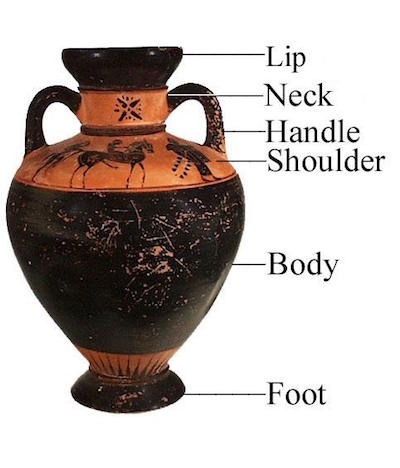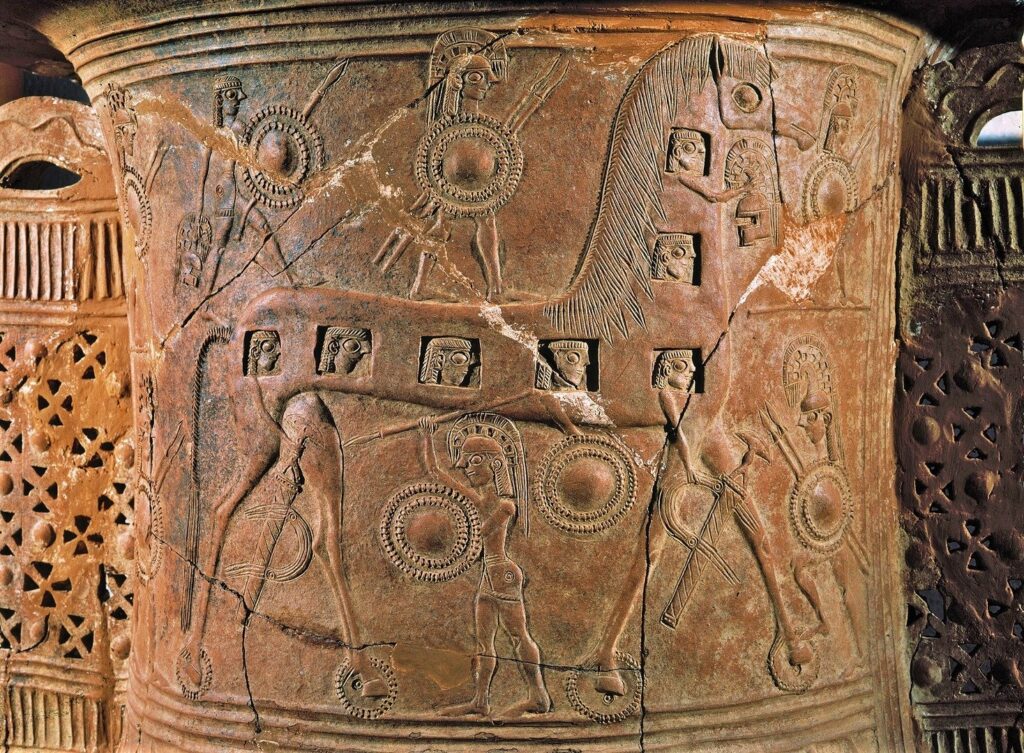The Enduring Allure of the Vase: A Vessel of History, Art, and Function

The humble vase, a seemingly simple container, holds within its curved walls a rich history spanning millennia. More than just a receptacle for flowers, the vase has served as a canvas for artistic expression, a symbol of status and culture, and a testament to human ingenuity. From the ancient civilizations of Greece and China to modern contemporary designs, the vase continues to captivate and evolve, adapting to the changing aesthetics and practical needs of each era.
A Journey Through Time: Tracing the Vase’s Origins
The origins of the vase can be traced back to the earliest civilizations, where practical needs intertwined with emerging artistic sensibilities. Early vases, often crafted from clay or stone, served primarily as utilitarian vessels for storing water, food, and other essential commodities.
Ancient Egypt: Egyptian vases, often found in tombs, were more than just containers. They were elaborately decorated with hieroglyphs and scenes from daily life, reflecting the importance of the afterlife and the reverence for their pharaohs. These vases, often made of alabaster or faience, were symbols of wealth and status.
Ancient Greece: The Greeks elevated the vase to an art form. Greek pottery, renowned for its intricate designs and masterful craftsmanship, showcased scenes from mythology, historical events, and everyday life. The iconic amphora, hydria, and krater were not just vessels for storing wine and water; they were visual narratives, meticulously painted with black-figure and red-figure techniques.
Ancient China: Chinese porcelain, a material revered for its delicate beauty and durability, played a pivotal role in the development of the vase. From the early dynasties, vases were crafted with meticulous detail, often adorned with intricate floral patterns, landscapes, and auspicious symbols. The development of porcelain techniques like celadon glazing further enhanced the aesthetic appeal of Chinese vases, making them highly sought after by collectors and connoisseurs.

The Vase as a Canvas: Artistic Expression Through the Ages

Throughout history, the vase has served as a blank canvas for artists to express their creativity and cultural values. From the geometric patterns of early Greek pottery to the vibrant colors of contemporary glass art, the vase has been adorned with a diverse range of artistic styles.
Renaissance and Baroque: The Renaissance saw a revival of classical forms and motifs in vase design. Intricate carvings, gilded details, and mythological scenes adorned vases, reflecting the era’s fascination with classical art and learning. The Baroque period embraced opulence and grandeur, with vases becoming increasingly elaborate and ornate.
18th and 19th Centuries: The 18th century saw the rise of porcelain factories across Europe, producing exquisite vases adorned with delicate floral patterns and pastoral scenes. The 19th century witnessed a diversification of styles, from the romanticism of Victorian-era vases to the art nouveau movement’s emphasis on organic forms and flowing lines.
20th and 21st Centuries: The 20th century brought about a radical departure from traditional vase designs. Modernist movements like Art Deco and Bauhaus embraced geometric shapes and minimalist aesthetics. Contemporary artists have experimented with a wide range of materials, from glass and metal to ceramics and plastics, pushing the boundaries of vase design and functionality.

Beyond Decoration: The Vase in Modern Life
While the aesthetic appeal of the vase remains paramount, its role in modern life extends beyond mere decoration. Vases serve as functional objects, adding beauty and vibrancy to homes, offices, and public spaces.
Floral Displays: The primary function of a vase remains to hold and display flowers. Whether it’s a single stem or a lavish bouquet, the vase provides the perfect setting to showcase the beauty of nature. The choice of vase can significantly impact the overall aesthetic of a floral arrangement, complementing the colors, shapes, and textures of the flowers.
Interior Design: Vases are integral components of interior design, adding visual interest and personality to any space. They can be used to create focal points, add height and texture, and complement the overall color scheme of a room. A carefully chosen vase can transform a mundane space into a sophisticated and inviting environment.
Collectibles and Investments: Antique and rare vases can be valuable collectibles, sought after by art enthusiasts and investors alike. The value of a vase depends on factors such as its age, provenance, artistic merit, and rarity. Certain vases, particularly those crafted by renowned artists or produced by prestigious manufacturers, can fetch exorbitant prices at auction.
The Future of the Vase: Innovation and Sustainability
As we move forward, the vase continues to evolve, embracing new technologies and sustainable practices. Designers are exploring innovative materials, such as recycled glass and biodegradable plastics, to create eco-friendly vases. 3D printing technology is also revolutionizing vase design, allowing for the creation of complex and intricate forms that were previously impossible to achieve.
The future of the vase lies in its ability to adapt to the changing needs and values of society. Whether it’s a minimalist vase crafted from recycled materials or a digitally designed masterpiece, the vase will continue to be a source of beauty, inspiration, and functionality for generations to come.
FAQ: Frequently Asked Questions About Vases
What are the different types of vases? There are many different types of vases, including amphora, hydria, krater, bud vases, cylinder vases, flared vases, and more. The type of vase often depends on its intended use and aesthetic style.
What materials are vases made from? Vases can be made from a variety of materials, including clay, porcelain, glass, metal, stone, and plastic. The choice of material often depends on the desired aesthetic, functionality, and cost.
How do I choose the right vase for my flowers? Consider the size, shape, and color of your flowers when choosing a vase. Taller vases are suitable for long-stemmed flowers, while shorter vases are better for smaller bouquets. The color of the vase should complement the colors of the flowers.
How do I care for my vase? Clean your vase regularly with warm soapy water to remove any dirt or residue. Avoid using abrasive cleaners, which can damage the surface of the vase. For delicate vases, hand washing is recommended.
How do I display a vase without flowers? Vases can be displayed as standalone decorative objects. Group vases of different sizes and shapes together to create visual interest. Consider the placement of the vase in relation to other objects in the room.
Are antique vases worth anything? The value of an antique vase depends on several factors, including its age, provenance, artistic merit, and rarity. Consult with an appraiser to determine the value of your antique vase.
Where can I buy vases? Vases can be purchased from a variety of retailers, including department stores, home decor stores, antique shops, and online marketplaces.
Conclusion: The Vase’s Enduring Legacy
The vase, a seemingly simple object, has proven to be a timeless and versatile artifact. From its humble beginnings as a utilitarian container to its evolution as a symbol of artistic expression and cultural significance, the vase has played a vital role in human history. Its enduring allure lies in its ability to adapt to the changing needs and aesthetics of each era, while retaining its core function as a vessel of beauty and inspiration. Whether it’s a centuries-old antique or a contemporary design, the vase continues to captivate and enrich our lives, reminding us of the enduring power of art and the beauty of the natural world. The vase is more than just a container; it is a reflection of our history, our culture, and our enduring appreciation for beauty.